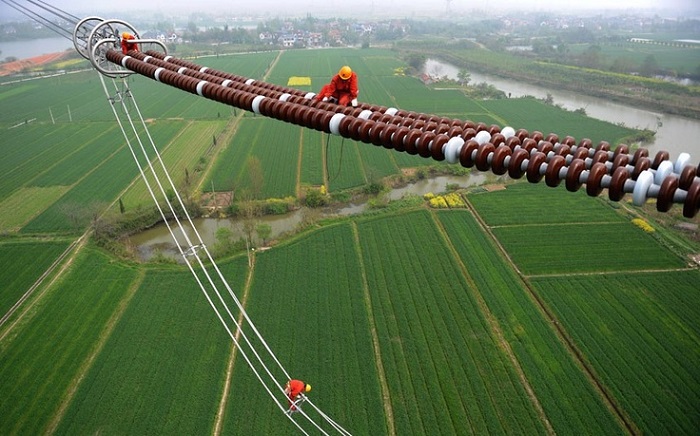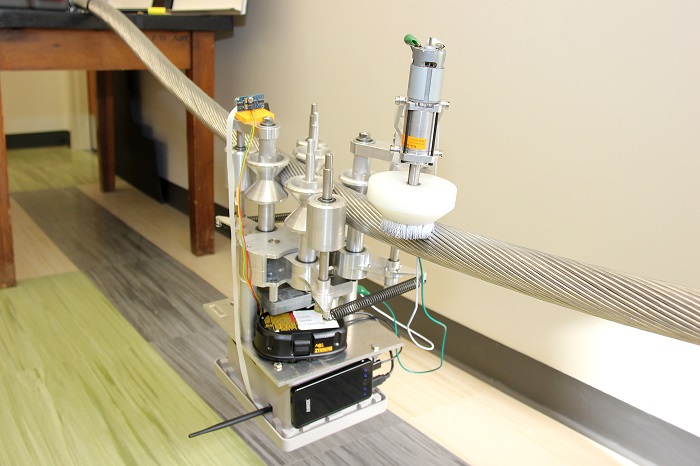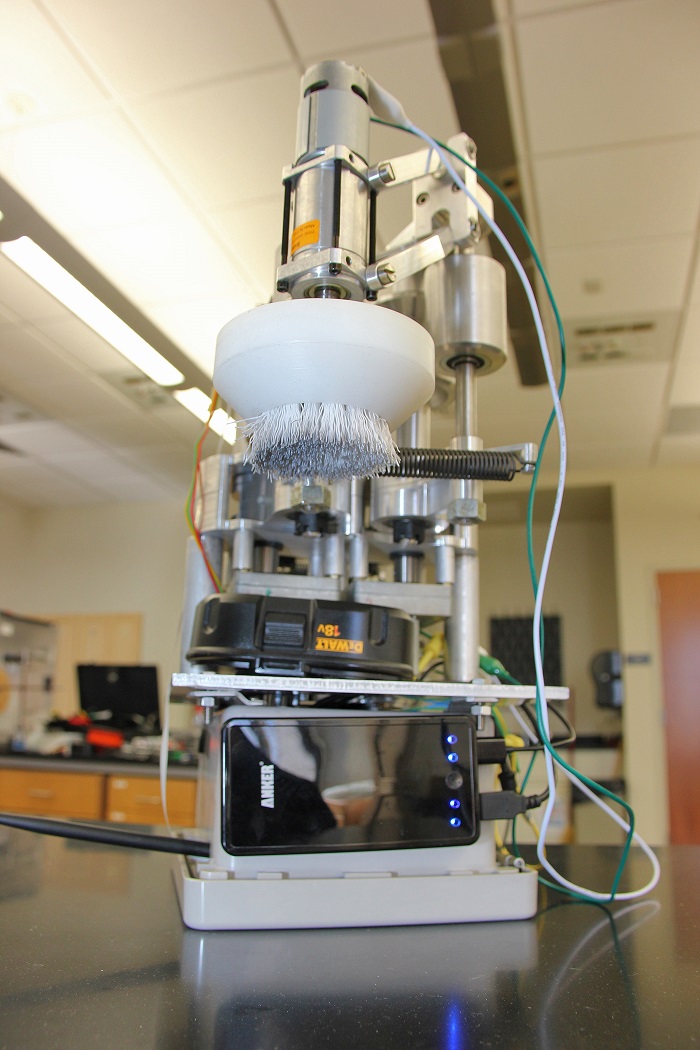Inspecting power lines is a dangerous and arduous task — line crews typically have to wear special, protective clothing, employ complicated safety procedures, and on occasion, shut the power off completely before beginning the job.
In short, it’s a difficult, time-consuming, and dangerous task.

Researchers from the University of Georgia, College of Engineering believe they’ve created a solution for all the many issues associated with this line of work, and it comes in the form of a self-propelled robot no bigger than a coffee machine.

“This is a tool that's small enough for a single utility worker to pack in a truck or van and use daily,” said Javad Mohammadpour, an assistant professor of electrical engineering, who designed, prototyped, and tested a robot with a team of students. “Some of the robots currently in use weigh 200-300 pounds while our robot is only 20-25 pounds.”
The bot is outfitted with a spinning brush, for the purpose of clearing away vegetation, bird droppings, salt deposits, and other forms of debris that might degrade the line. It also has an onboard camera that crews can use to closely inspect problem areas. Additionally, the robot is wireless, and can be controlled by a smartphone, tablet, or laptop.


“This is our first prototype, and there are a number of advances we would like to explore, including making the robot more autonomous,” Mohammadpour said. “For example, some decision-making could be made on board. If the robot detects a problem, it could send a signal to the controller instead of requiring a person to monitor the robot in real time.”
Mohammadpour added that the robot has the ability to have GPS technology added to it, so that it can geo-tag potential problems along electrical lines which, in turn, would allow utility works to more quickly and efficiently perform follow-up inspections and repairs.
Via the University of Georgia
Advertisement
Learn more about Electronic Products Magazine





